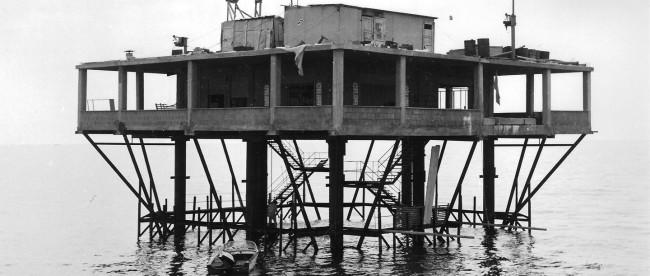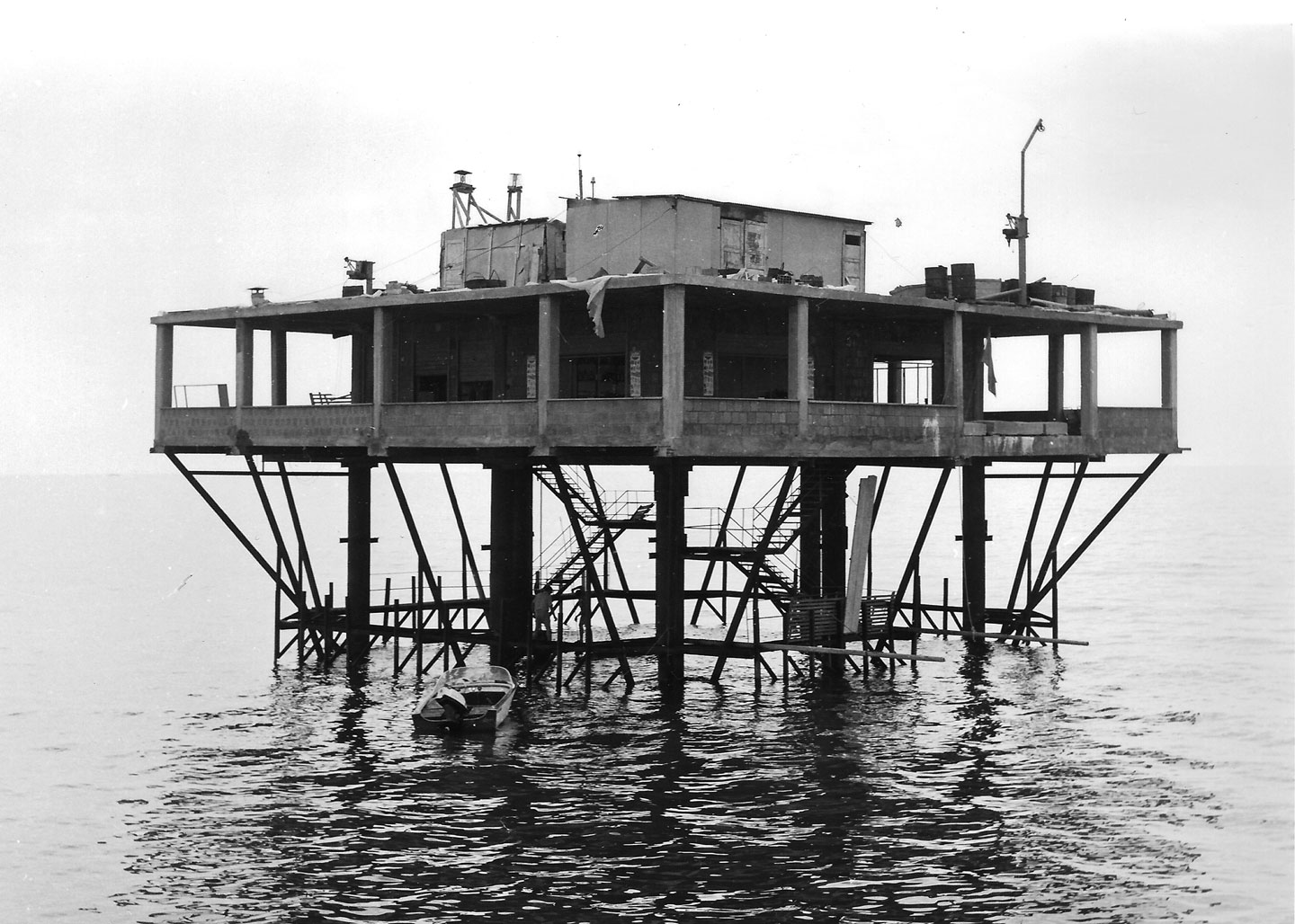Every Rose Has Its Nine Pylons

The Italian city of Rimini is situated in the northeast of the country and on the coast of the Adriatic Sea. In the late 1960s, it was home to roughly 100,000 people. One of those people, though, didn’t really want to live there. His name was Giorgio Rosa. Rosa was an engineer. And Rosa didn’t just want to move out of Rimini — he wanted to leave Italy altogether. In fact, even that wasn’t enough for him.
So he built himself a new home, as seen below.

That is — or was — Rose Island. Rosa, whose last name is not-so-coincidentally the feminine word for “rose” in Italian — began construction on the artificial landform in 1967. When Rose Island was completed, it sported a restaurant, a bar, a gift shop (of course), and importantly, a post office. It became a popular tourist attraction, with visitors from the Italian mainland taking ships to the steel curiosity off-shore.
But for reasons unclear, being a local attraction wasn’t enough for Rosa. And at some point — perhaps before he started building — he realized that Rose Island could be more than a tourist trap. It turned out that Rose Island stood about 11 kilometers (6.8 miles) off the Italian coast, which was just outside Italy’s territorial waters. On May 1, 1968, Rosa declared his pylon-lofted platform the “Respubliko de la Insulo de la Rozo” (Esperanto for the “Republic of Rose Island”), adopted Esperanto as the official language of his new city-state, and announced that its post office would be issuing stamps which could be used as currency. Oh, and he declared himself the president of his new nation.
Italy didn’t take too fondly to this idea, though, as noted by a website dedicated to cataloguing Rimini’s history. Perhaps it was because Rosa could (in theory, at least) avoid paying taxes, or perhaps Italy feared that Rose Island could be used as a jumping off point for Communist ne’er-do-wells, the Italians decided to go to war — at least Rosa’s view. Italy sent four members of the military police to take control of the 400 square meter platform, which they succeeded in doing with relative ease.
Giorgio Rosa returned to Italy where, in protest, he continued to claim sovereignly over Rose Island as the self-proclaimed leader of a self-proclaimed government in exile. He’d never return to his steel nation. As Wikipedia notes, on February 13, 1969, Italy brought out the explosives and sunk Rose Island, dooming it to the bottom of the sea. Rosa’s response? He issued a commemorative stamp depicting the explosion.
Bonus Fact: Esperanto was created in 1887 by a Polish physician named L. L. Zamenhof. Zamenhof, per Wikipedia, created the language in hopes of developing “an easy-to-learn, politically neutral language that would transcend nationality and foster peace and international understanding between people with different languages.” But a half-century later, Adolf Hitler believed otherwise. Zamenhof was Jewish and Hitler believed that Esperanto was designed to be a tool of a global Jewish conspiracy, allowing Jews from all over the world to communicate in a common tongue. As a result, the Nazis persecuted those who taught the language.
From the Archives: The Principality of Sealand: Another micronation which didn’t really make it.
Take the Quiz: Can you name the countries with less than 1 million inhabitants?
Related: “Micronations: Invent Your Own Country and Culture with 25 Projects” by Kathy Ceceri and illustrated by Chad Thompson. Five stars on five reviews.
